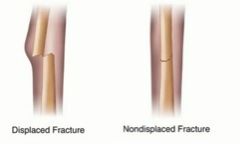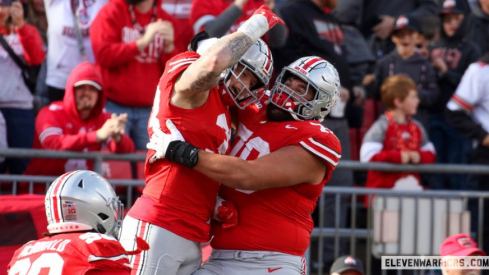After suffering a right ankle fracture in the Michigan game this past November, J.T. Barrett underwent surgery. In February, two screws were removed from his ankle.
Ezekiel Elliott suffered a left wrist fracture during the preseason camp last August. After having two surgeries on this wrist, Elliott recently shared he has been medically cleared.
Having these two stars on the mend is great(!) news for Buckeye Nation, so in light of the excitement, I will discuss fractures and why certain ones (like J.T. and Zeke’s) need surgery, while other fractures do not.
Any time there is a suspected broken bone, imaging is needed to determine what type of fracture occurred. There are various classifications and sub-classifications of fractures.
Most notably, there are “closed” fractures and “open” fractures. Closed fractures do not break the skin, while open fractures do. Another word for an open fracture is a “compound” fracture, and this injury carries a very high risk of infection.
Another fracture classification category is displacement. If a fracture is “non-displaced,” that means the ends of the broken bone line up with each other in their normal anatomic position. Imagine two pieces of a puzzle. The pieces fit together perfectly, but there’s clearly a break in between them.
Fractures are termed “displaced” if the broken pieces of bone do not align properly. They were knocked out of their normal position. In the latter case, the broken pieces need to be put back together.
This process is called “reduction.” It can be done with surgery (open reduction) or without surgery (closed reduction). During the latter procedure, the doctor manually sets the bone back in place using manipulation. (Yes, it’s as painful as it sounds, which is why the patient is typically sedated.)

To explain why reduction is needed, I will return to the puzzle analogy.
Think about people who make a hobby out of completing puzzles and then gluing all the pieces together for display. For fractured bones, that “glue” is a blood clot and callus of new tissues that forms around the broken pieces to allow them to properly morph themselves back together.
It’s really easy to glue puzzle pieces together when the pieces are all lined up neatly with each other in correct formation, but trying to glue pieces that don’t really fit would be a mess. Once the glue dries, the pieces would be stuck in that incorrect, awkward position. With fractures, that mess is referred to as “nonunion” or “malunion,” where the bones don’t heal together as well as they should. Reduction is used to prevent this scenario.

Source: mdguidleines.com
To hold an open reduction in place, the bone fragments are then “fixated” by the surgeon. Screws, rods, and/or plates are used to hold the pieces in position. This is crucial for allowing the bones to heal in the alignment that will allow the most effective return of function, and the metal can later be removed.
What this means is J.T. Barrett’s hardware was an excellent thing. It will give his ankle the best chance of pain-free mobility post-operatively. The same goes for Ezekiel Elliott’s wrist operations.
Surgical intervention is the optimal treatment in certain cases to ensure the best outcomes. Malunion in a non-athlete can be painful, annoying, and appear deformed. Malunion in an athlete can be career-ending. While the thought of stainless steel and titanium being surgically implanted into these athletes may seem worrisome, Buckeye fans can rest assured that the tried and true standard of care has been employed, and based on Barrett and Elliott’s updates via social media, it sounds like we can look forward to their respective displays of healthy talent.
References:
- Eiff, M. Patrice, and Robert Hatch. Fracture management for primary care. Saunders/Elsevier, 2012.
- Hoppenfeld, Stanley, and Richard Buckley. Surgical exposures in orthopaedics: the anatomic approach. Lippincott Williams & Wilkins, 2012.


